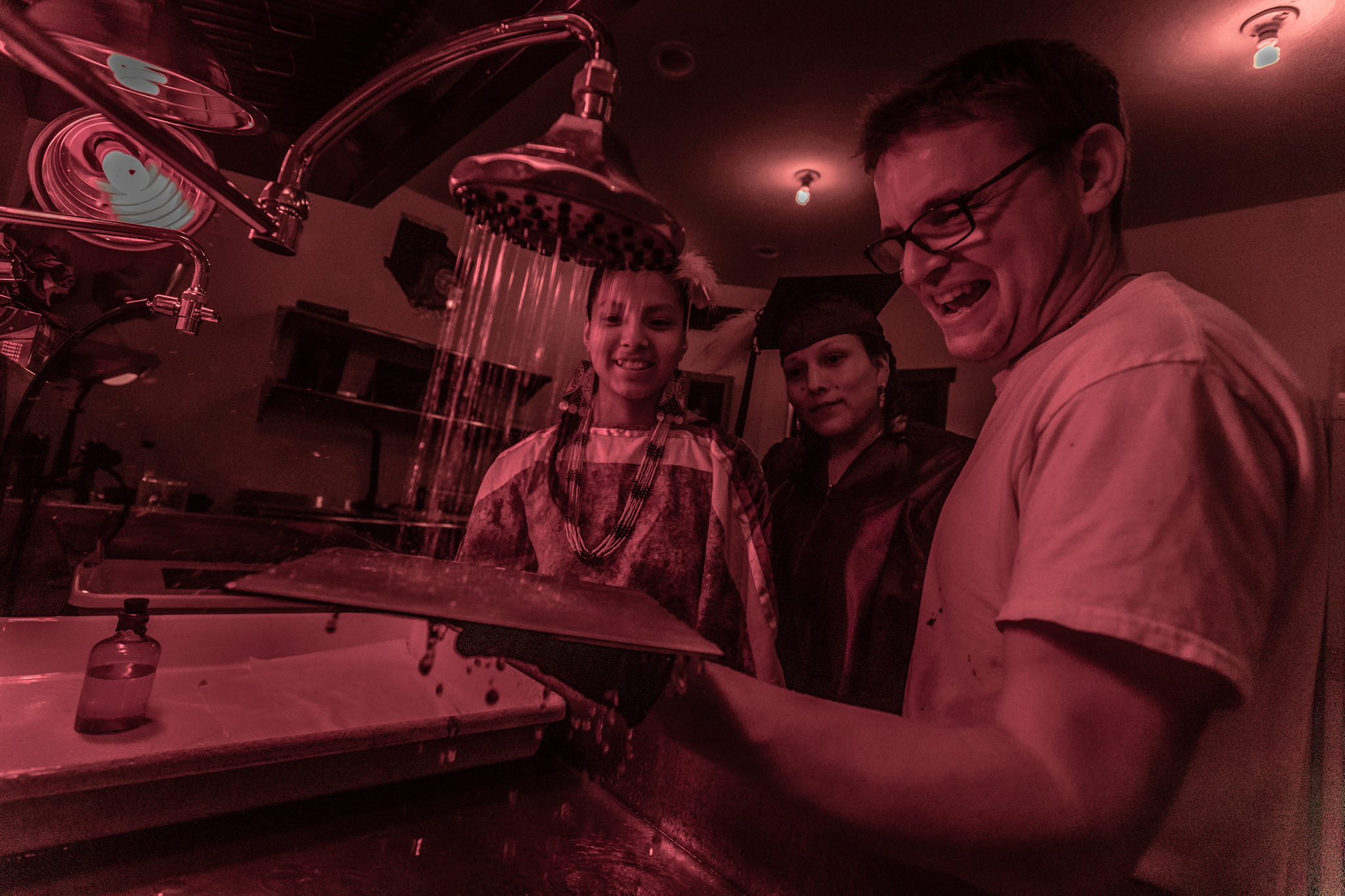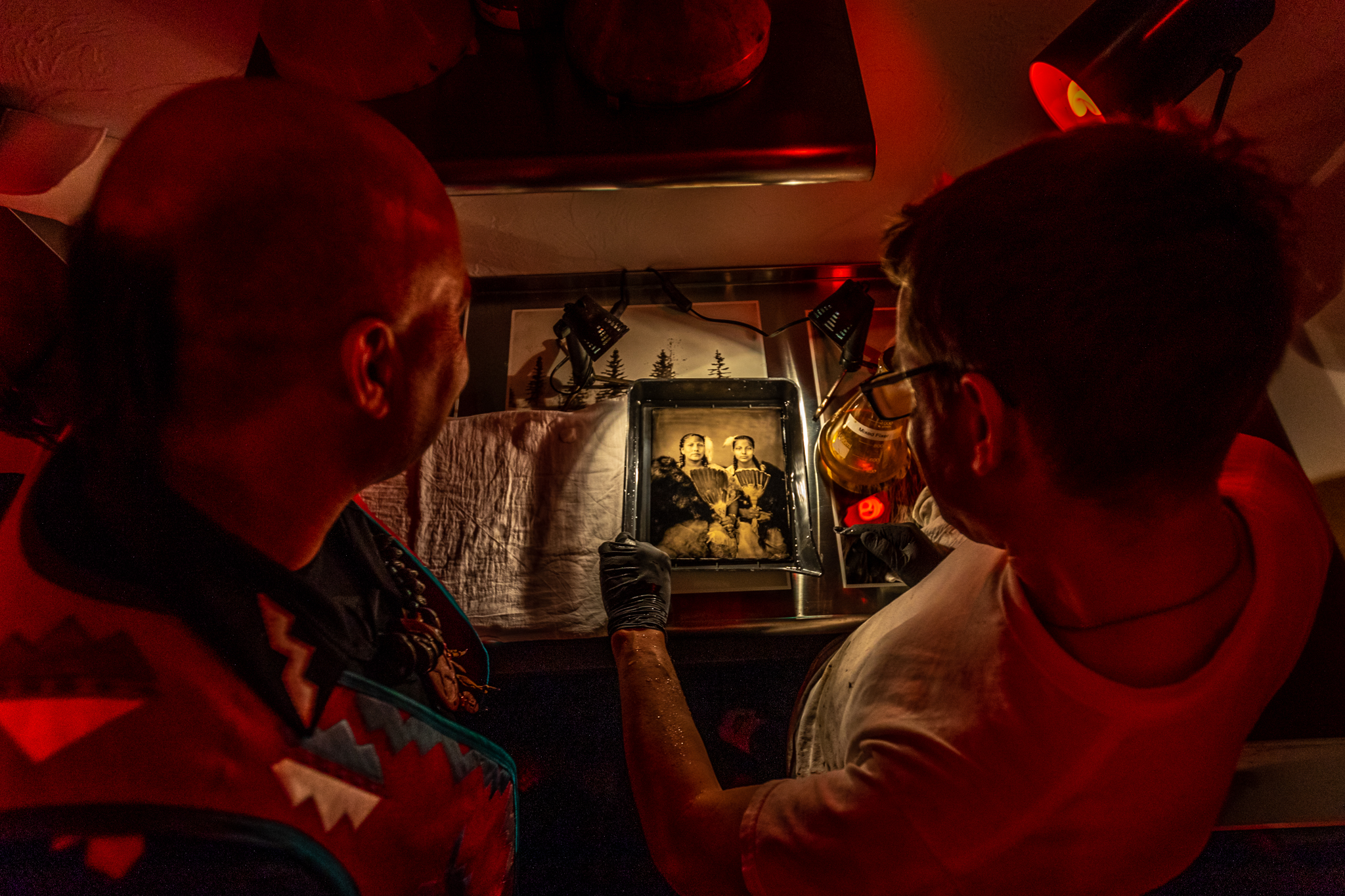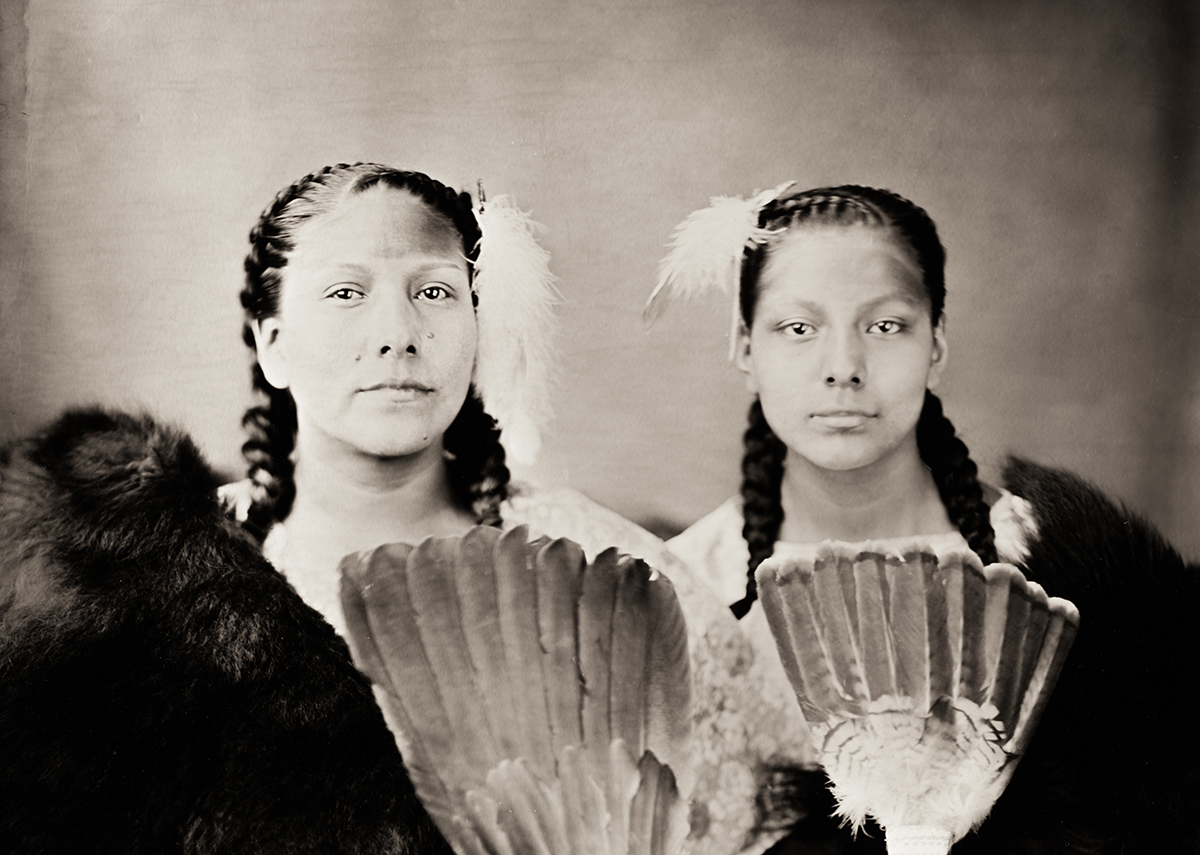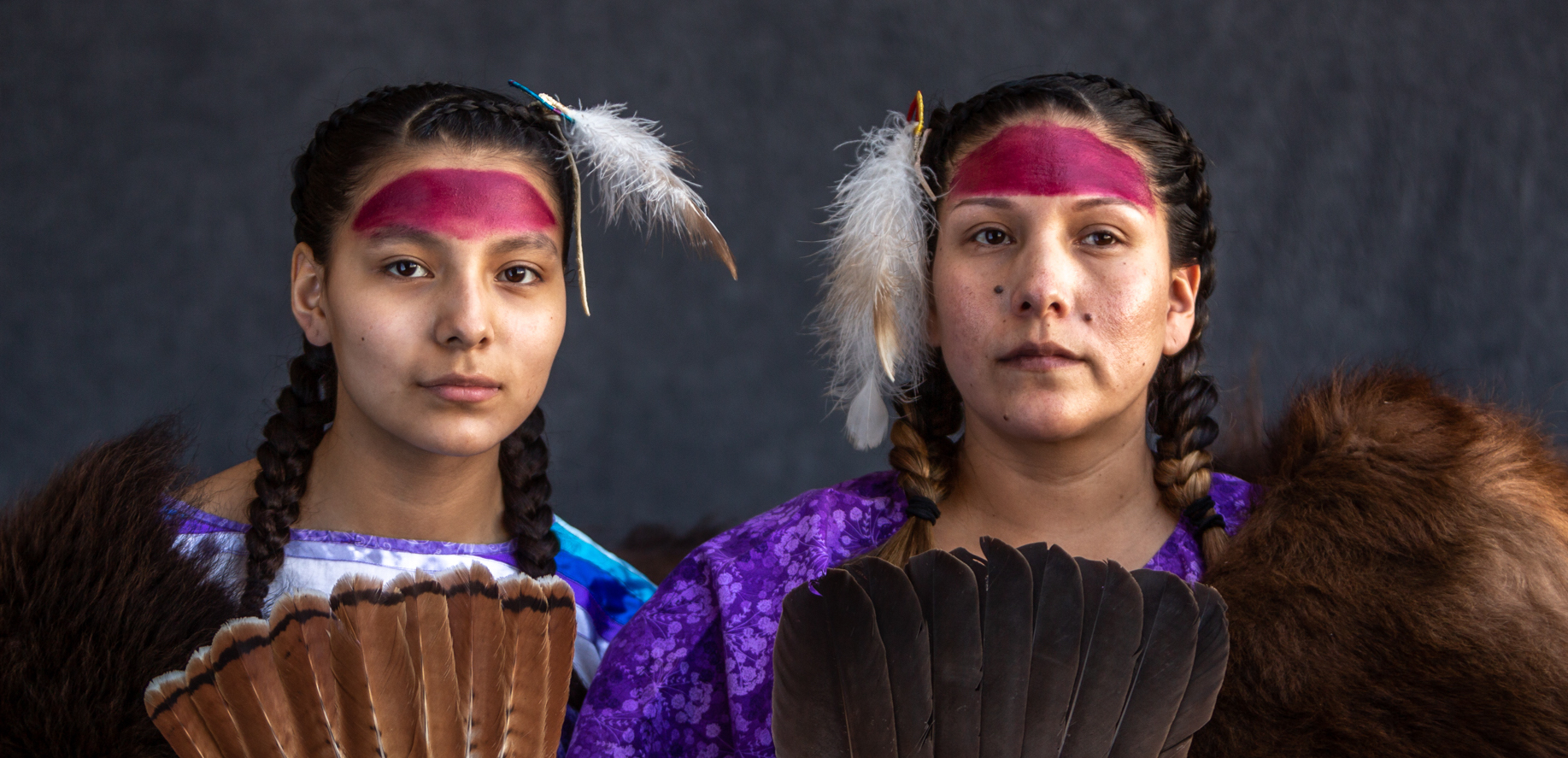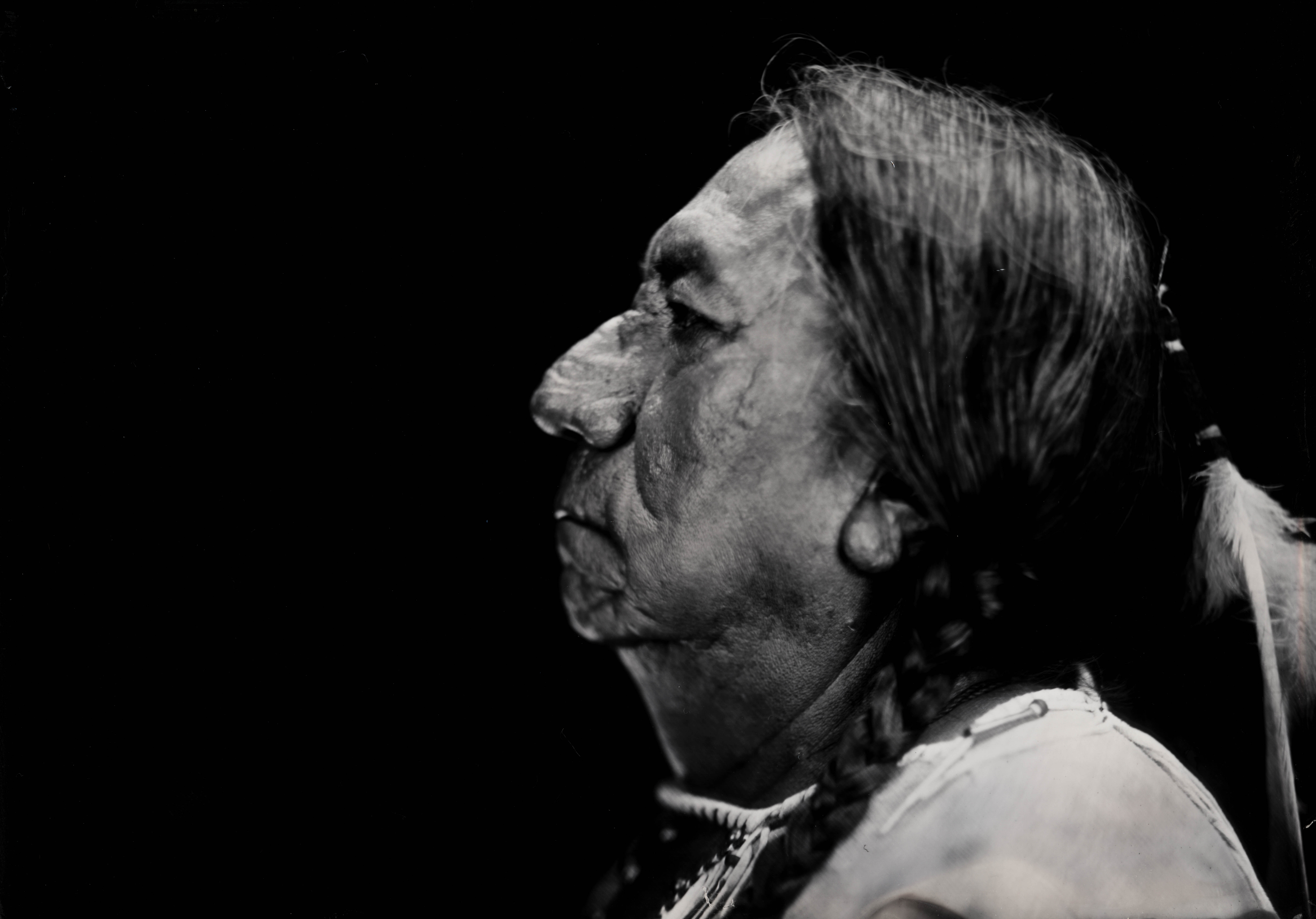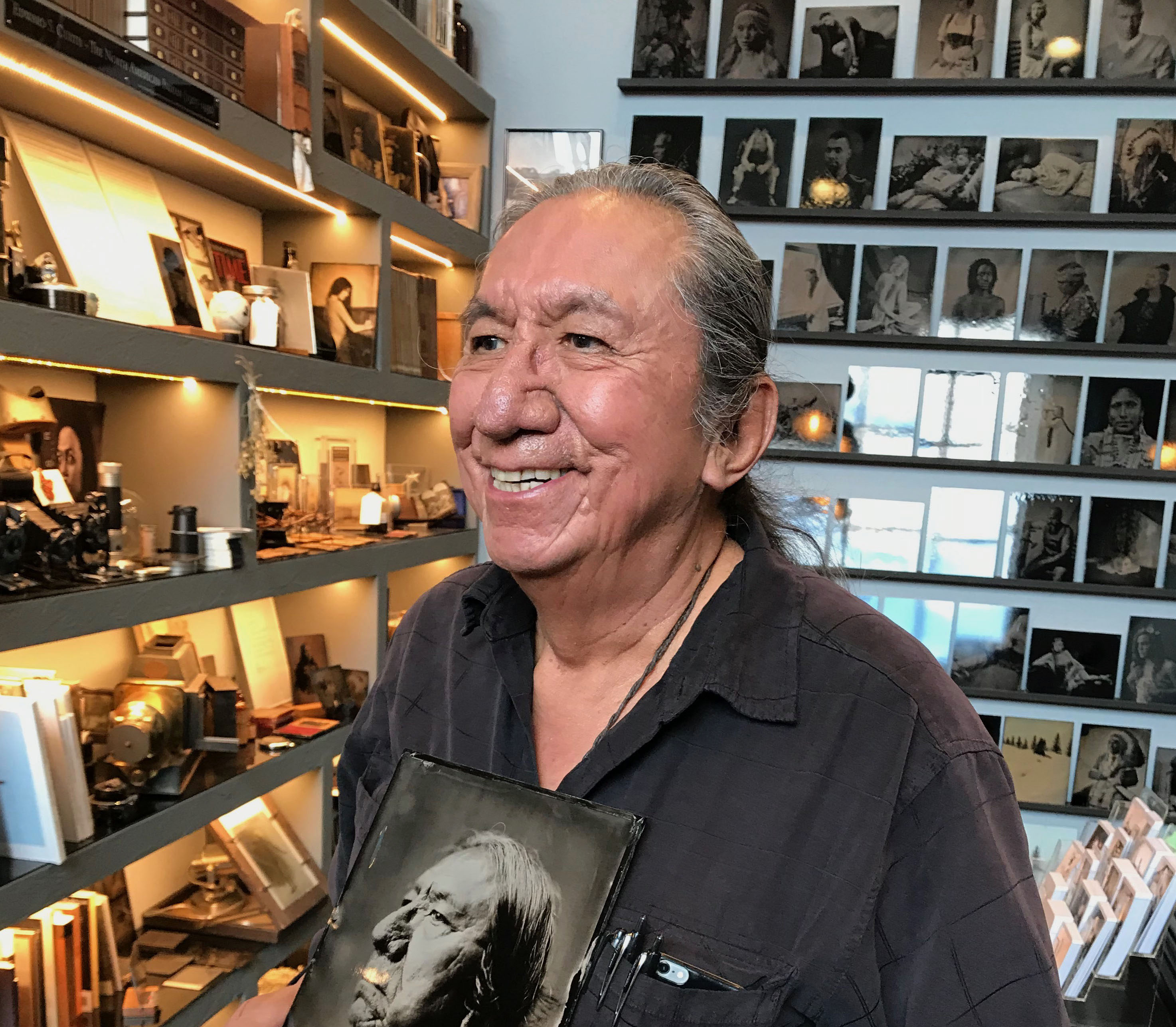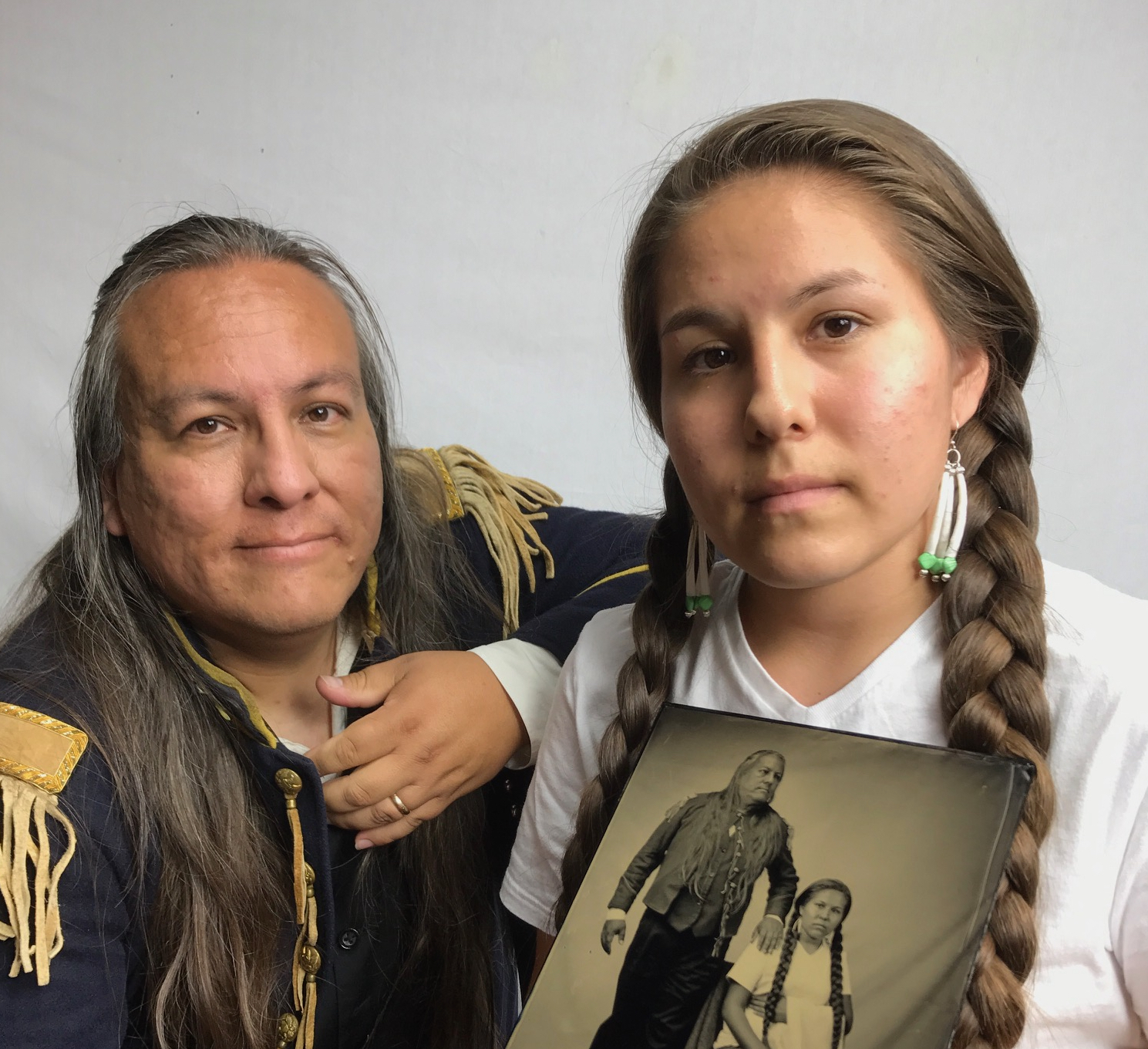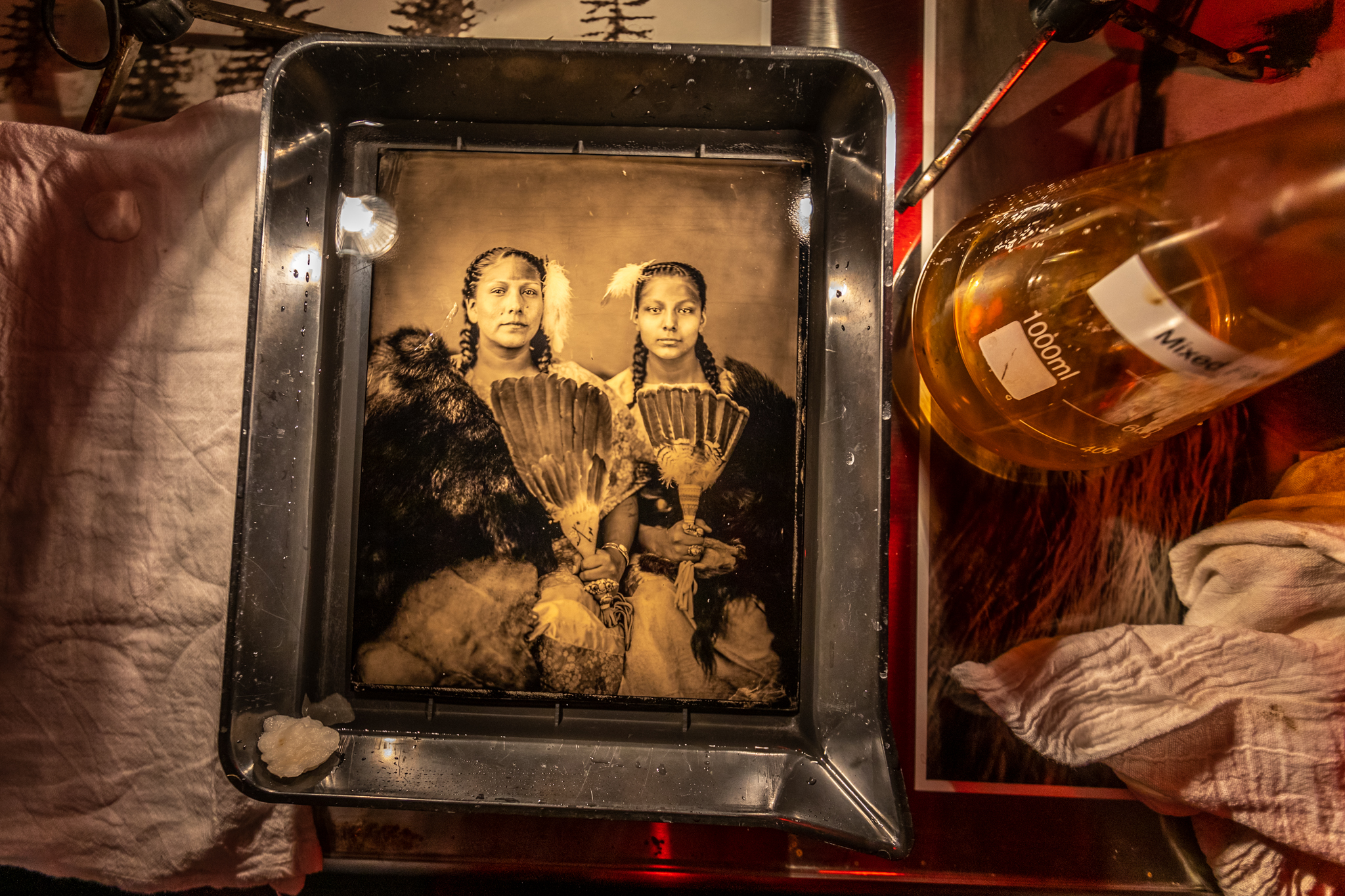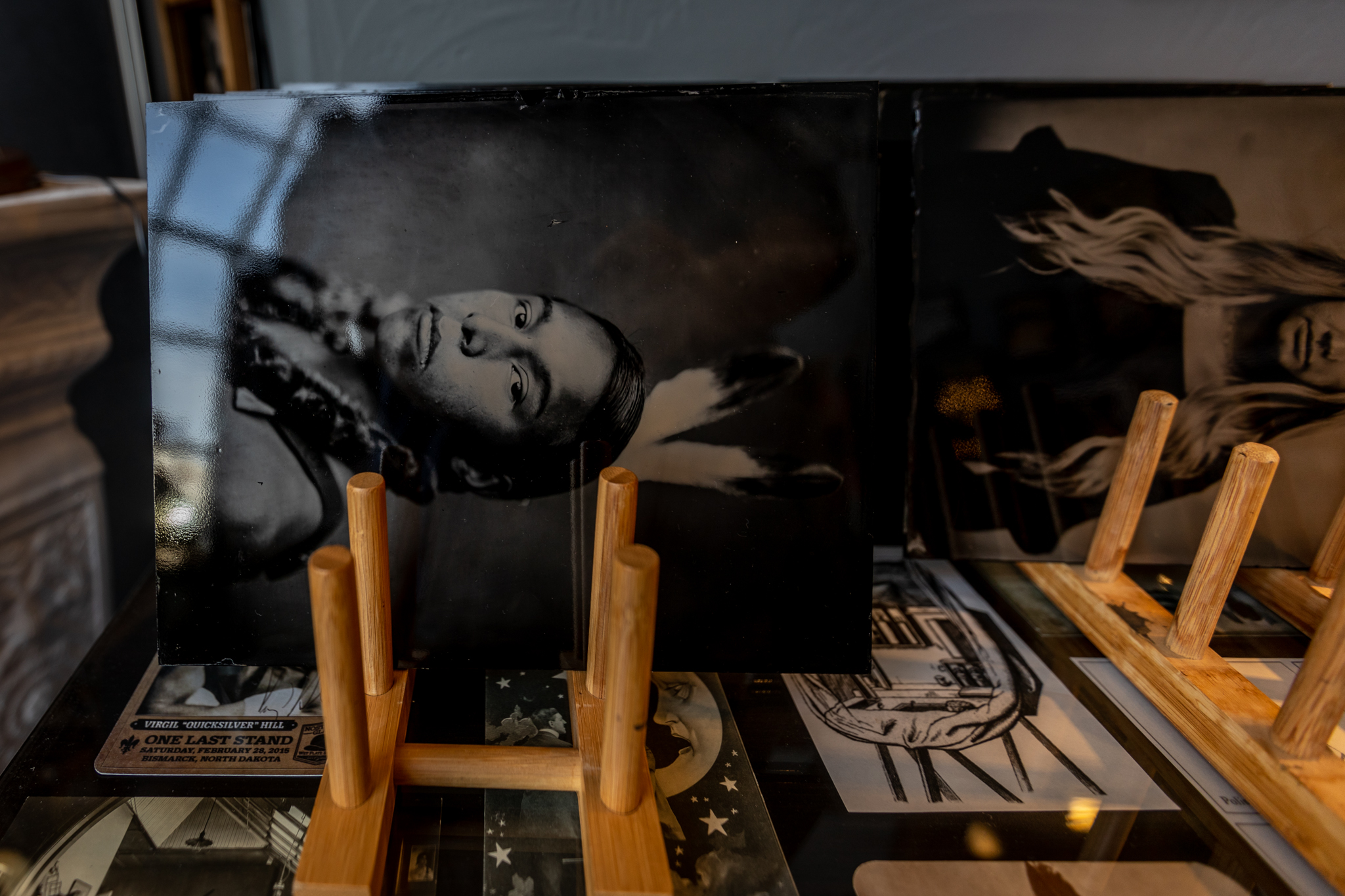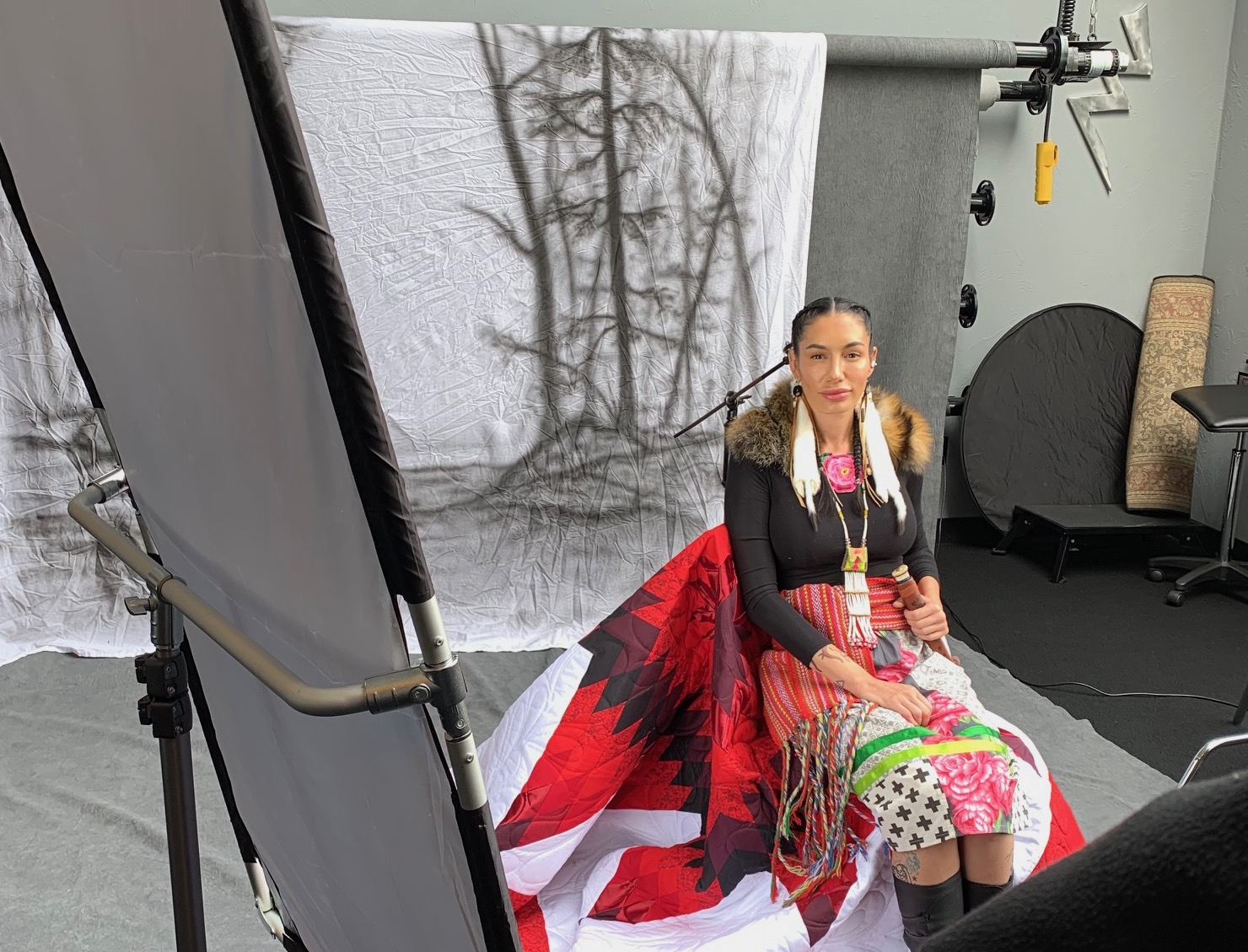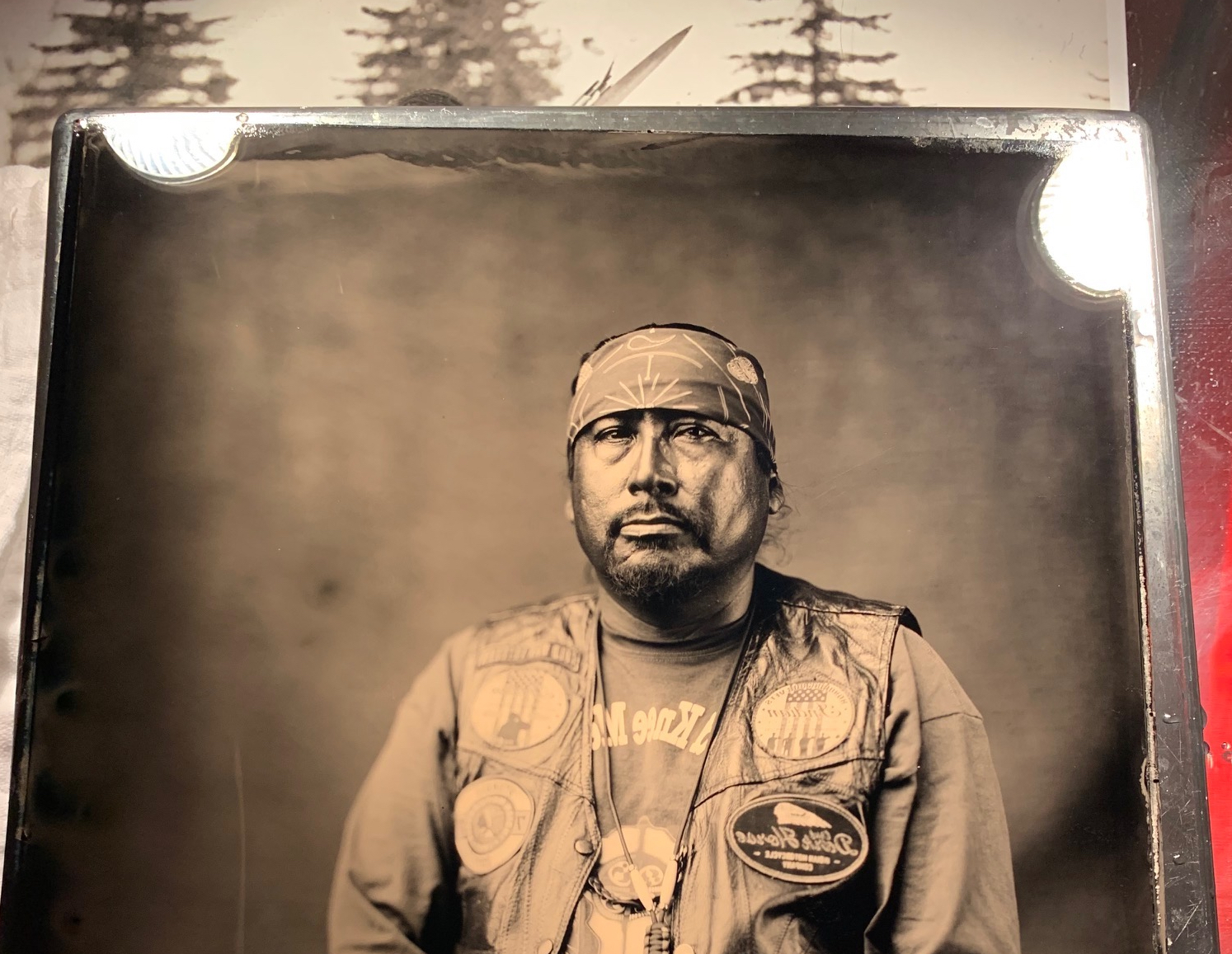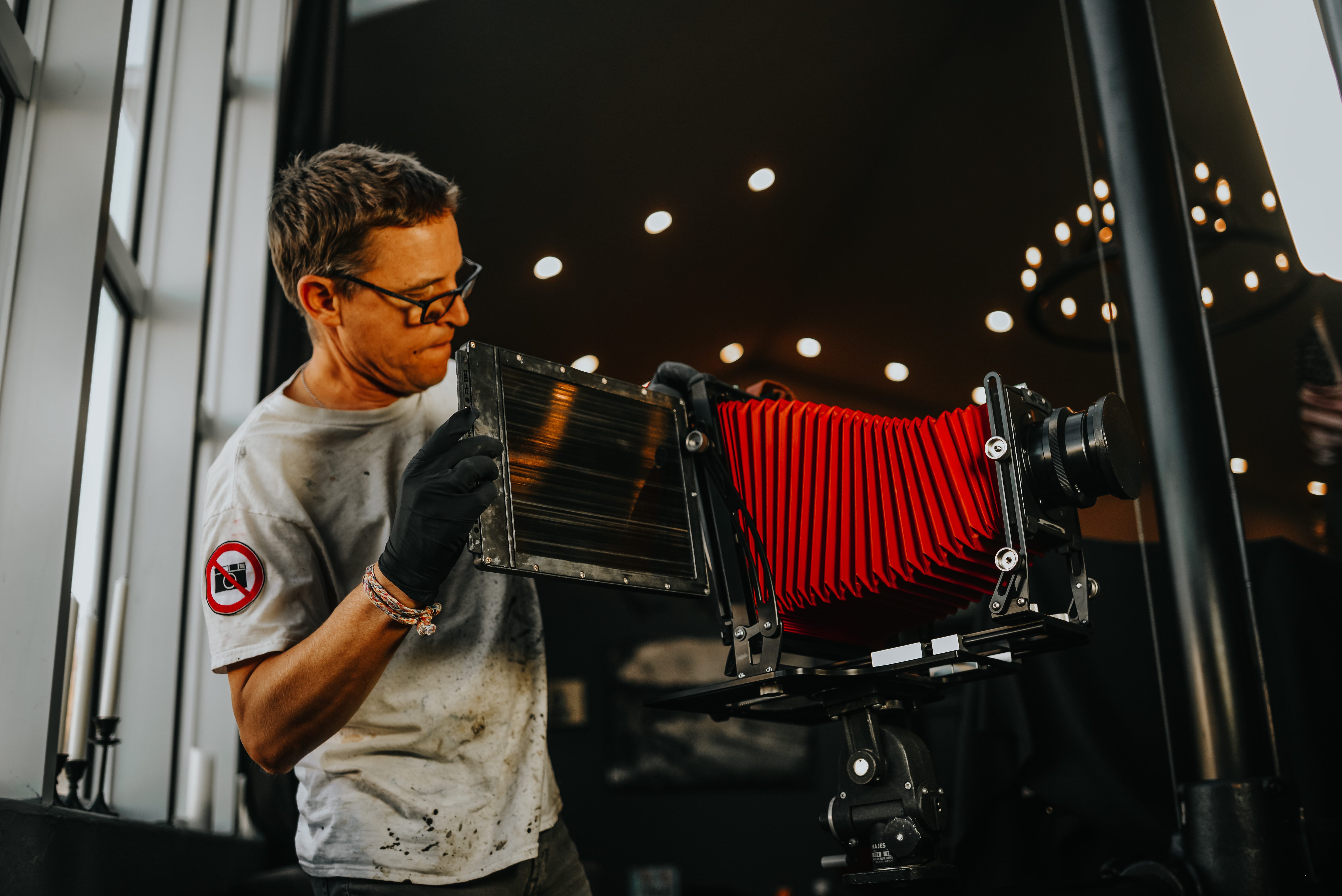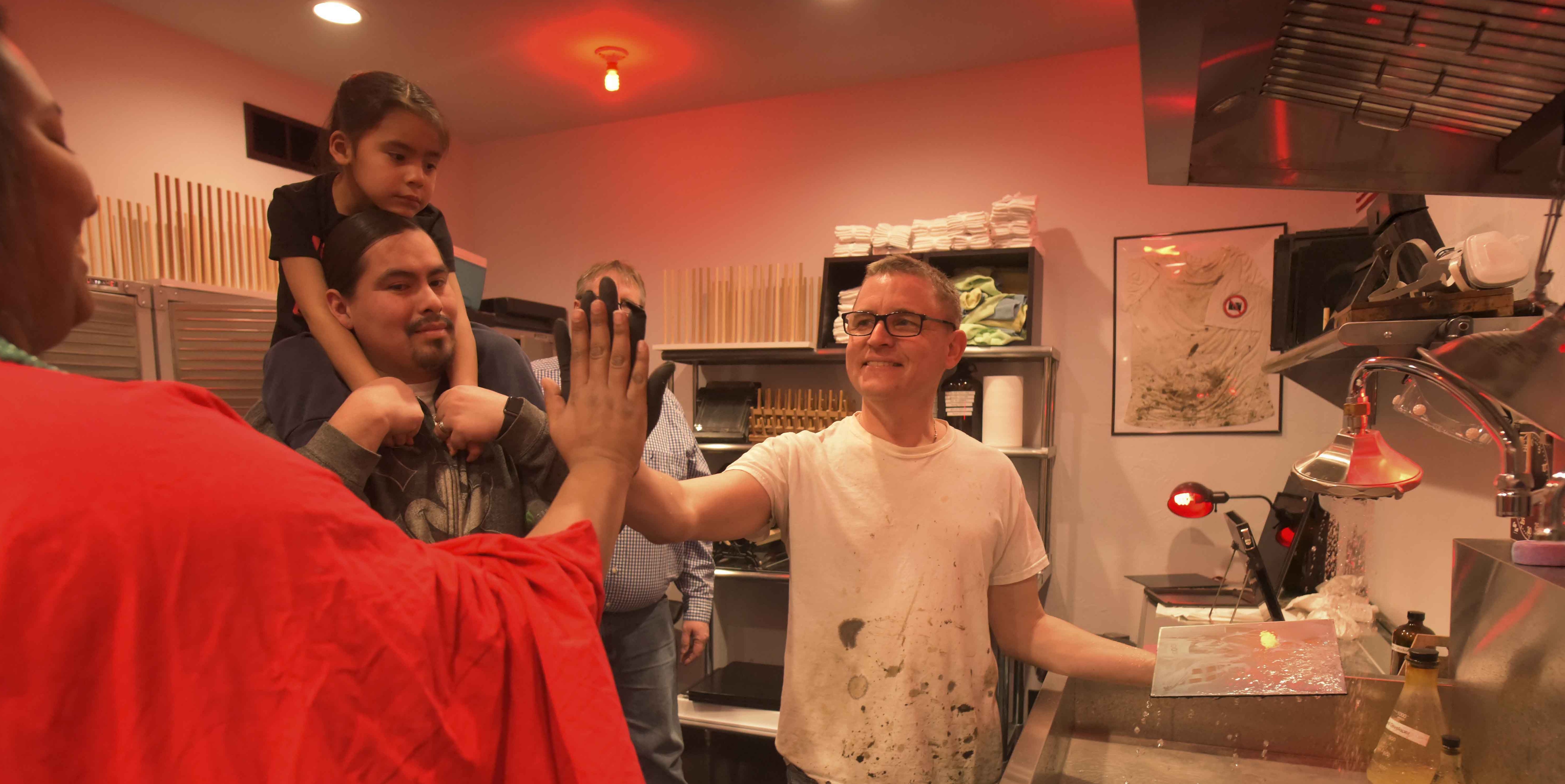Ambrotype photographs are unique objects – there is no negative, or rather, this is it. Instead, the photograph is made by exposing an image through the camera onto a glass plate prepared with light-sensitive chemicals. The resulting negative, when viewed by reflected light against a black background, appears as a positive; the clear areas look black, and the exposed areas appear relatively light.
This is called wet plate photography, since the light-sensitive chemicals are poured onto the glass plate shortly before being used. The resulting photograph was also called an ambrotype (‘imperishable picture’), and was popular from the mid 1850s until the 1870s when it was gradually superseded by less cumbersome processes. This was the method used to make many of the first portraits of Native American people, at a time when it was assumed that they would not survive the aggressive expansion of settler states.
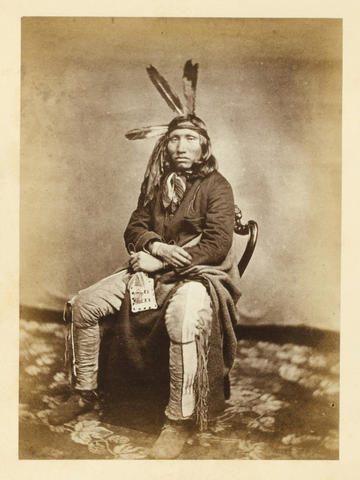
Portrait of He-kha'-ka Ma-ni (Running Elk), 1858, by the James E. McLees Studio, Washington DC. Made using the wet plate negative process. [PRM1998.128.4]
Portraits like this one of He-kha'-ka Ma-ni (Running Elk), a Yankton Sioux man, were taken by professional photographers in their studios when tribal delegations came to sign treaties in Washington DC, in the winter of 1857. Most of the treaties they signed ceded territory to the US Government. The Yankton Treaty for instance, signed in April 1858 between the United States government and the Yankton Sioux (Nakota), ceded most of eastern South Dakota to the United States government, and created a small reservation for native people.
Whilst many people view such images today as coming from a time of violent settler expansion and when racist views about the native population held sway, this exhibition and the voices of those Native Americans who have worked with Balkowitsch give another perspective on this visual history, one that sees them also as treasured images of ancestors who show their dignity and courage in the face of terrible circumstances. It is this understanding of the importance of these valued historical images that each person brings with them to Balkowitsch's studio, as they collaborate with the past to create a new portrait.
As Margaret Yellowbird-Landin, one of Balkowitsch’s partners in this work, says:
These images show that we are a people that could not be erased from this earth. They are for our future generations to see we are still here, we are strong, we are humble, we are pitiful, we are honored, we are grateful, we are indigenous, we are unified.

